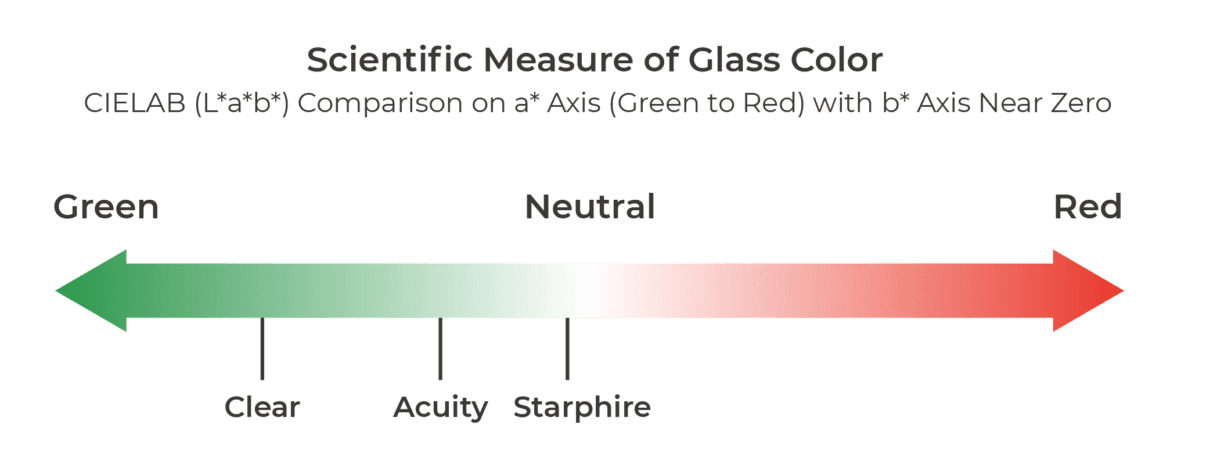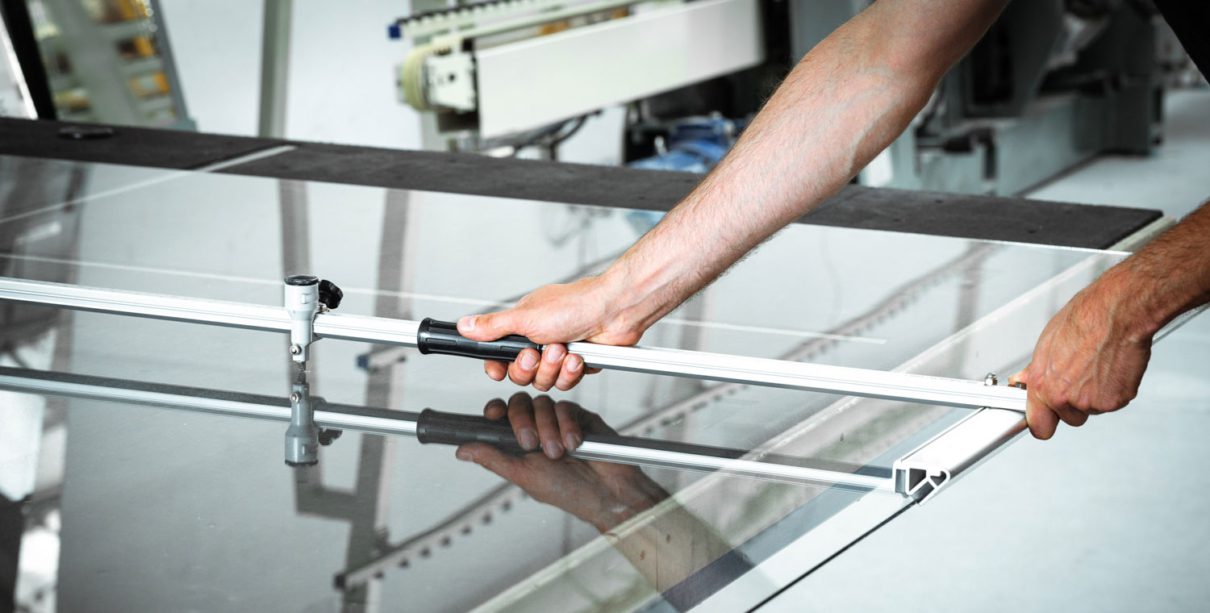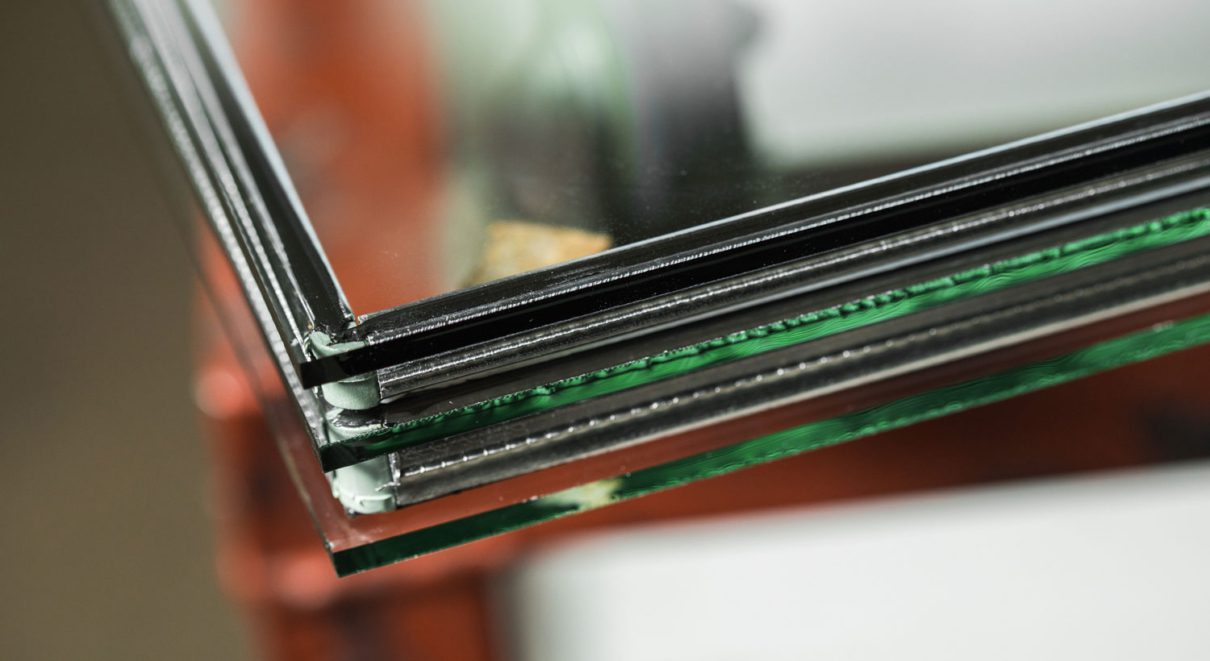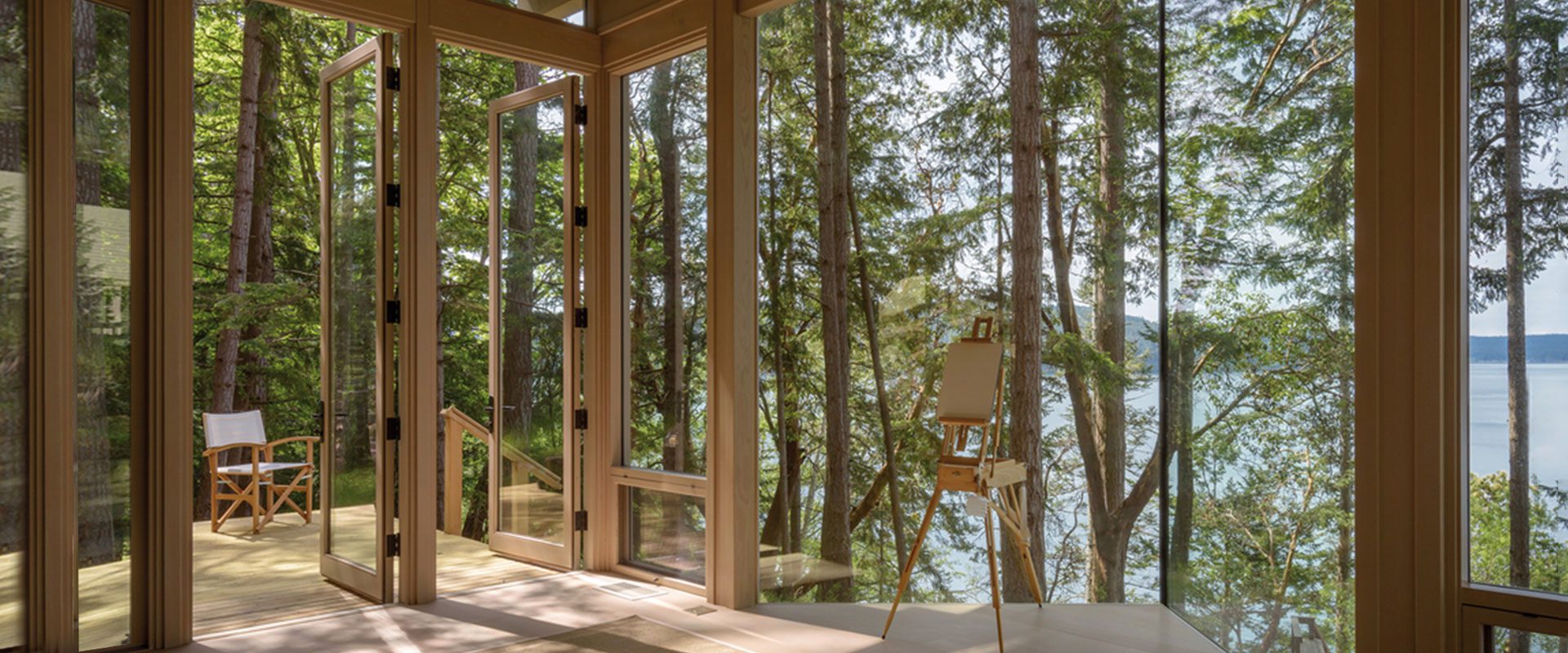What’s the Deal with Distortion in Architectural Glass?
Conversations around distortion in architectural glass remain common – in fact they’re increasing. The topic has been front and center with over-sized glass for quite a while but it’s worth drilling down on some points as it regards standard glass substrates. There are four central questions:
- Is distortion inherent in glass?
- If it is inherent, why am I only seeing it now?
- What is the glass industry doing to mitigate distortion in glass?
- What industry standards apply to determining if distortion is within an acceptable range?
Is distortion inherent in glass?
In short – yes, a level of distortion is inherent in glass, more so in heat treated and tempered glass than annealed (non-heat treated) glass. Sometimes it can be imperceptible to the eye, other times it is visible. Either way, it is there to one degree or another and always has been. Distortion is very subjective and the degree of distortion can change due to several different factors which we will explore. The main point is that distortion is inherent and it’s subjective.
It’s helpful to establish what distortion is and why it occurs.
What is distortion?
We see reflected images in glass because light rays bounce off the surface and return to the eye. When glass is flat, the reflected image is seen as normal with the light rays reflecting at equal but opposite angles.
When light waves bounce off curved glass or glass that isn’t perfectly flat, the angles are no longer equal resulting in a modified reflected image.
On a concave surface the reflected image appears short and thin while on a convex surface the image appears stretched. An extreme example is the House of Mirrors at the fair ground arcade. Fun stuff at the Fair but not something you want in your living room window.

What causes distortion in insulated glass?
There are several influencing factors that can contribute to distortion in insulated glass units (IGU’s) and they can occur singularly or in combination.
- Heat treatment process used for heat-strengthened and tempered glass.
- Changes in temperature or barometric pressure and changes in elevation from where the insulating glass units were fabricated.
- Wind load deflection.
The heat treatment process is key to why distortion is inherent so let’s focus on that.
Heat Treated Glass:
There are two common categories of heat-treated glass: heat strengthened and tempered.
Heat strengthened glass is increasingly required for code compliance and safety, greater strength and resistance to breakage and thermal stress cracking.
Heat strengthened and tempered glass are both produced using the same processing equipment and both types involve heating the glass to approximately 1,200 degrees Fahrenheit, then force-cooling it to create surface and edge compression. So much for the similarities.
The differences between the two glass types:
- With tempered glass, the cooling process is rapid which creates higher surface compression and/or edge compression in the glass. It is the rate of cooling combined with other variables that create a surface compression of at least 10,000 pounds per square inch (psi). This is the process that makes tempered glass four to five times stronger and safer than annealed glass.
- With heat-strengthened glass, the cooling process is slower, which means the compression strength is lower. As a result, heat-strengthened glass is approximately twice as strong as annealed glass.
Specifications for tempered glass far outweigh those for heat strengthened these days so we’ll narrow this conversation down to tempered glass.

Inherent distortion due to roller waves:
Glass is tempered by passing through an oven, heating it to an almost liquid state, then rapidly cooling it with forced air. The glass moves through the oven on a series of ceramic rollers. These ceramic rollers produce very slight indentations which show as repeating lines of glass thickness variation that extend across the width dimension of the glass as it passes through the oven.
The radius of these indentations, more commonly referred to as ”roller waves” is very small but does produce discernible reflective image distortion – remember back to the beginning of this blog and how light reflects off concave and convex surfaces.
Roller wave distortion has been present ever since tempered glass was first produced and became more noticeable when IGU’s of tempered glass were produced. That’s pretty much ancient history to many of us so it’s fair to ask The Big Question:
“If it’s inherent, why am I only seeing it now?”
That is a very fair question Grasshopper. And there is an explanation.
Distortion has become more visible because the reflectivity of glass has increased. Reflectivity has increased due to the increased use of low emissivity coatings. Low emissivity coatings work by reflecting solar heat back to their source of origin – the key being their reflectiveness. With these coatings becoming mandatory to meet more stringent performance requirements in building codes, insulation and customer expectations, they are being used in most new construction. IGU’s with reflective LoE coatings start to act more like mirrors. This effect is even more pronounced when interior lighting is low and the glass is being viewed from a darker interior out to a daylight exterior.

Higher performance mandates drive higher reflectivity which highlights the inherent distortion in tempered glass. That’s why it’s being noticed more than it was before.
How much distortion in glass is too much, and what is the glass industry doing to mitigate it?
There are industry standard specification requirements for the strength aspect of tempered glass under ASTM C1048. Fully tempered glass will have either a minimum surface compression of 69 MPa (10,000 psi), or an edge compression of not less than 67 MPa (9,700 psi).
There is no industry standard to quantify permissible tempered glass roller wave however as it is considered an inherent characteristic, a fact essentially conceded in the ASTM standards. The high-quality glass producers are continually investing in their processes and technology and while they cannot eliminate distortion, they aim to minimize it.
A Zebra Board is often used at the end of a tempering line as a visual inspection of the distortion in every load of glass. The black and white striped boards allow for a visual inspection of the glass but it’s subjective being dependent on the eye of the inspector.
On a more quantitative level a “Statistical Process Control Tool” is employed to monitor and measure roller wave with a calibrated roll wave distortion gauge. The Osprey Distortion Inspection System seems widely used at the high end of glass production as an example.
The degree of the roll distortion that is present is measured by the industry in peak-to-valley and peak-to-peak distance. The unit of measurement is called a Millidiopter.
What is a Millidiopter?
A diopter is a measure of power of any given lens. It is a very precise measurement and is used by opticians to measure and adjust the lens of your eye wear.
As we’ve noted, tempering inherently imparts curvature in the glass surface which can include bends at the trailing edge of the glass (end kink) and small (.008”) rises and falls of the surface – the roller waves discussed earlier.

The degree of this inherent curvature is measured as lens power in millidiopters (md) and is related to the radius of the curvature. Perfectly flat glass reflects a true image (0 md), while curved glass bends the reflected light so we see a distorted reflected image. The higher the millidiopter reading is, the greater the curvature of the glass surface and the higher the visible distortion.
There is limited published data but it seems that the glass industry considers a measurement of +/- 298 millidiopters of distortion with a roll-wave of .008 as typical for tempered glass. These should be taken as generalized broad-brush numbers as many glass producers may work with different tolerances.
At this point, you may be feeling a bit dissatisfied with the lack of absolute clarity in standards and measurement of distortion, which is understandable. However, when you factor in the inherent nature of distortion in tempered glass and the on-going efforts to minimize the effects visually, it is a fair version of current reality. A subjective issue is rarely definable to everyone’s satisfaction.
To wrap up, let’s re-visit what ASTM C 1048-04 notes about all this.
ASTM C 1048 – 04
7.4.1 “…The original flatness of the glass is slightly modified by the heat treatment, causing reflected images to be distorted….”
7.4.2 “…Fully tempered and heat-strengthened glass that has been made in a horizontal furnace may contain surface distortion, for example, picture framing, heat distortion, or roller wave distortion. Distortion will be detected when viewing images reflected from the glass surface…”
7.4.5 “Regardless of glass flatness, the degree of reflected distortion perceived is largely due to the characteristics or symmetry of the object being reflected. Linear objects (such as building curtain walls and telephone poles) and moving objects (such as cars) may appear distorted. Irregular and free form objects such as trees and clouds will appear to have little perceived distortion.”
7.4.6 “Specified bow and warp limits may not adequately define, or control, the distortion that may become apparent after glazing.”
8.2 “….Tempered glass by the nature of the process, is not as flat as annealed glass particularly along the edges. The deviation from flatness depends on thickness, width, length, and other factors. Usually greater thicknesses yield flatter products…”
Glass is not perfect – as we’ve noted in previous blogs. Distortion is inherent in tempered glass and is more noticeable with the use of high reflectivity coatings. There are no industry standards for roller wave distortion.
That being the case, it does help to at least understand why distortion occurs so that expectation management and diligence can be applied accordingly. In a previous blog we used an analogy of a Butterfly to describe glass – beautiful from a distance but get up close and in its face – not so much.
Glass is not perfect. That is reality.





